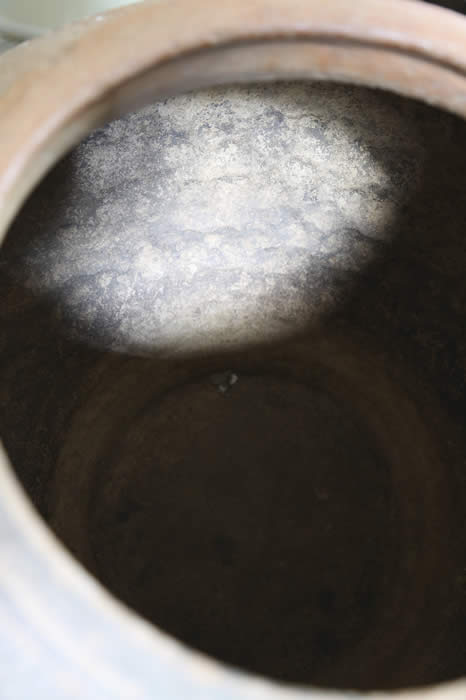Handbuilt Earthenware Jar Burma, 18th Century |
This earthenware jar displays nearly perfect symmetry, despite the fact that it was hand built with coils of clay, rather than thrown on a potter's wheel.

The rough interior reveals the fingerprints of the potter who coiled the large, thick coils of clay while constructing the piece. It's quite likely the dual meanings of "kunda" in sanskrit as a vessel or coil are both related to pottery. This leaves open the possibility that the interpretation of "kunda" practice as being related to coiled serpents stems from a mistaken interpretation of the practice, which may have always related to the careful, painstaking construction of a perfect vessel through many layers of attentive work.